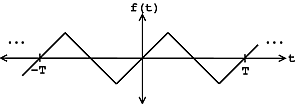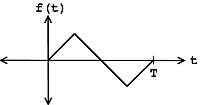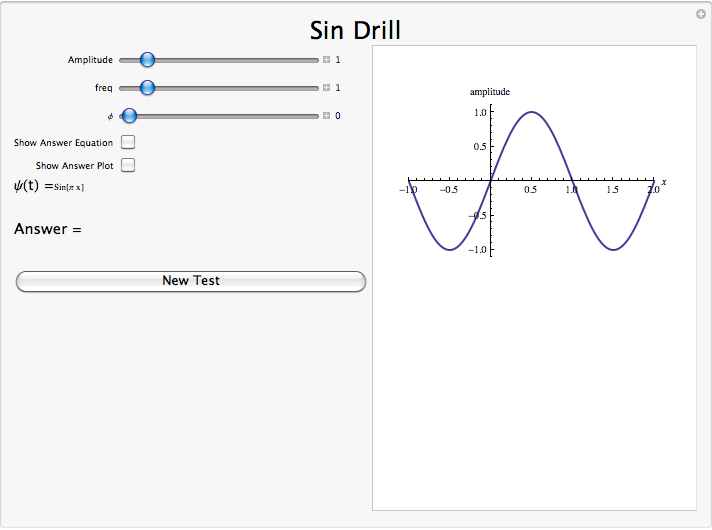6.1: Continuous Time Periodic Signals
- Page ID
- 22872
Introduction
This module describes the type of signals acted on by the Continuous Time Fourier Series.
Relevant Spaces
The Continuous-Time Fourier Series maps finite-length (or \(T\)-periodic), continuous-time signals in \(L^2\) to infinite-length, discrete-frequency signals in \(l^2\).

Periodic Signals
When a function repeats itself exactly after some given period, or cycle, we say it's periodic. A periodic function can be mathematically defined as:
\[ f(t)=f(t+m T) \forall m:(m \in \mathbb{Z}) \label{6.1} \]
where \(T>0\) represents the fundamental period of the signal, which is the smallest positive value of \(T\) for the signal to repeat. Because of this, you may also see a signal referred to as a \(T\)-periodic signal. Any function that satisfies this equation is said to be periodic with period T.
We can think of periodic functions (with period \(T\)) two different ways:
- as functions on all of \(\mathbb{R}\)

Figure \(\PageIndex{1}\): Continuous time periodic function over all of \(\mathbb{R}\) where \(f(t_0) = f(t_0+T)\) - or, we can cut out all of the redundancy, and think of them as functions on an interval \([0,T]\) (or, more generally, \([a,a+T]\)). If we know the signal is \(T\)-periodic then all the information of the signal is captured by the above interval.

An aperiodic CT function \(f(t)\), on the other hand, does not repeat for any \(T \in \mathbb{R}\); i.e. there exists no \(T\) such that Equation \ref{6.1} holds.
Demonstration
Here's an example demonstrating a periodic sinusoidal signal with various frequencies, amplitudes and phase delays:

To learn the full concept behind periodicity, see the video below.
Conclusion
A periodic signal is completely defined by its values in one period, such as the interval \([0,T]\).


